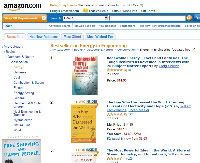In many respects, the Pacific Northwest isn’t like the rest of the US. The good people of Seattle, for instance, have a great deal of attention on “living green,” but they’re certainly not uptight about it. The whole region carries with it a light-hearted atmosphere that one might expect to find in New Orleans.
Check out Seattle’s Bang Office Interiors. It’s an entire floor of the greenest possible concepts in the design of the modern workspace. But wait a second. What’s that gorgeous room in the northeastern corner, occupying about 500 square feet? It’s a bar. And I’m talking about a complete set of bottled and draft beers, an assortment of fine wines, and the ingredients to make the complete repertoire of drinks.
It’s clear that the company’s president, Chad Smed, enjoys his time here on Earth. Bless his heart. But he also knows a ton about his subject, including the complete lifecycle analysis on a frighteningly large number of the products in his showroom.
I asked him about bamboo, thinking I’d get the normal rave reviews from a sustainability perspective. “Sure, it’s a weed; there’s very little ecological cost to harvesting it, but unfortunately, there’s more to it than that. It’s doesn’t take stain well, it mars easily, and it’s extremely hard to work with, since it keeps growing after it’s cut. And that extra work is expensive – both literally and ecologically.”
“So where should we go with this,” I asked?
“What we need is kind of like the ’tilapia of building products’ — easy to farm raise, low-impact on the environment.”
Chad’s a man of metaphors, and in this case, a pretty good one, I’d say. Cheers!



